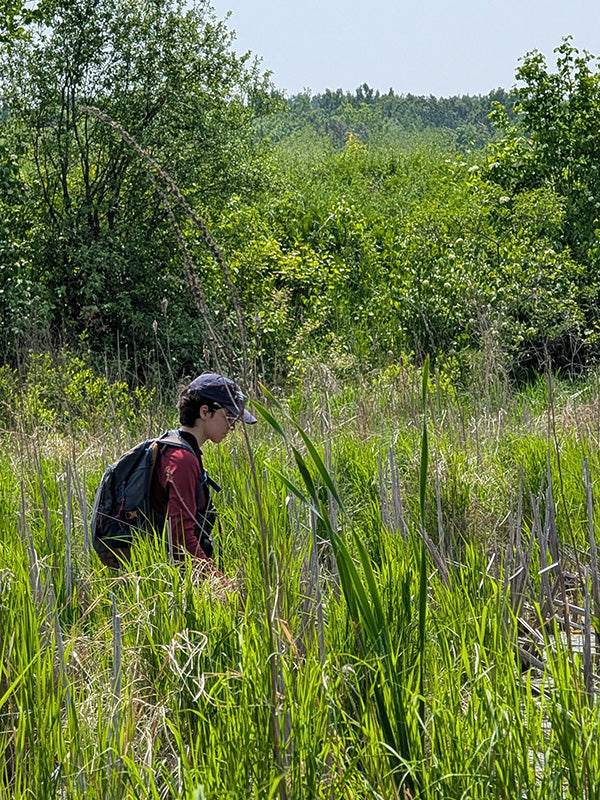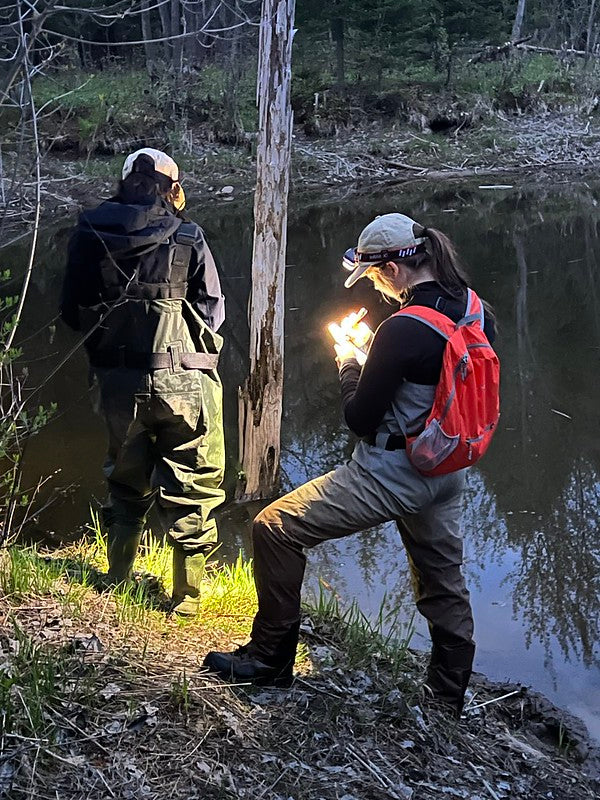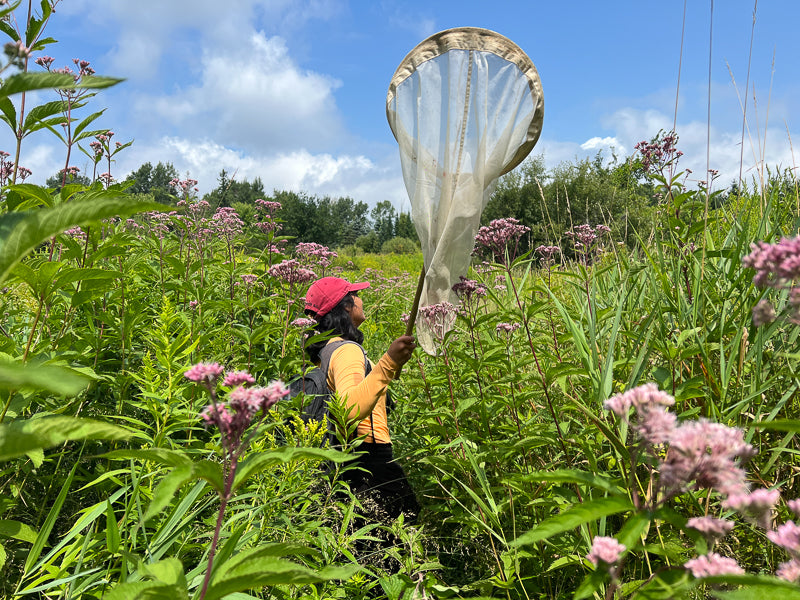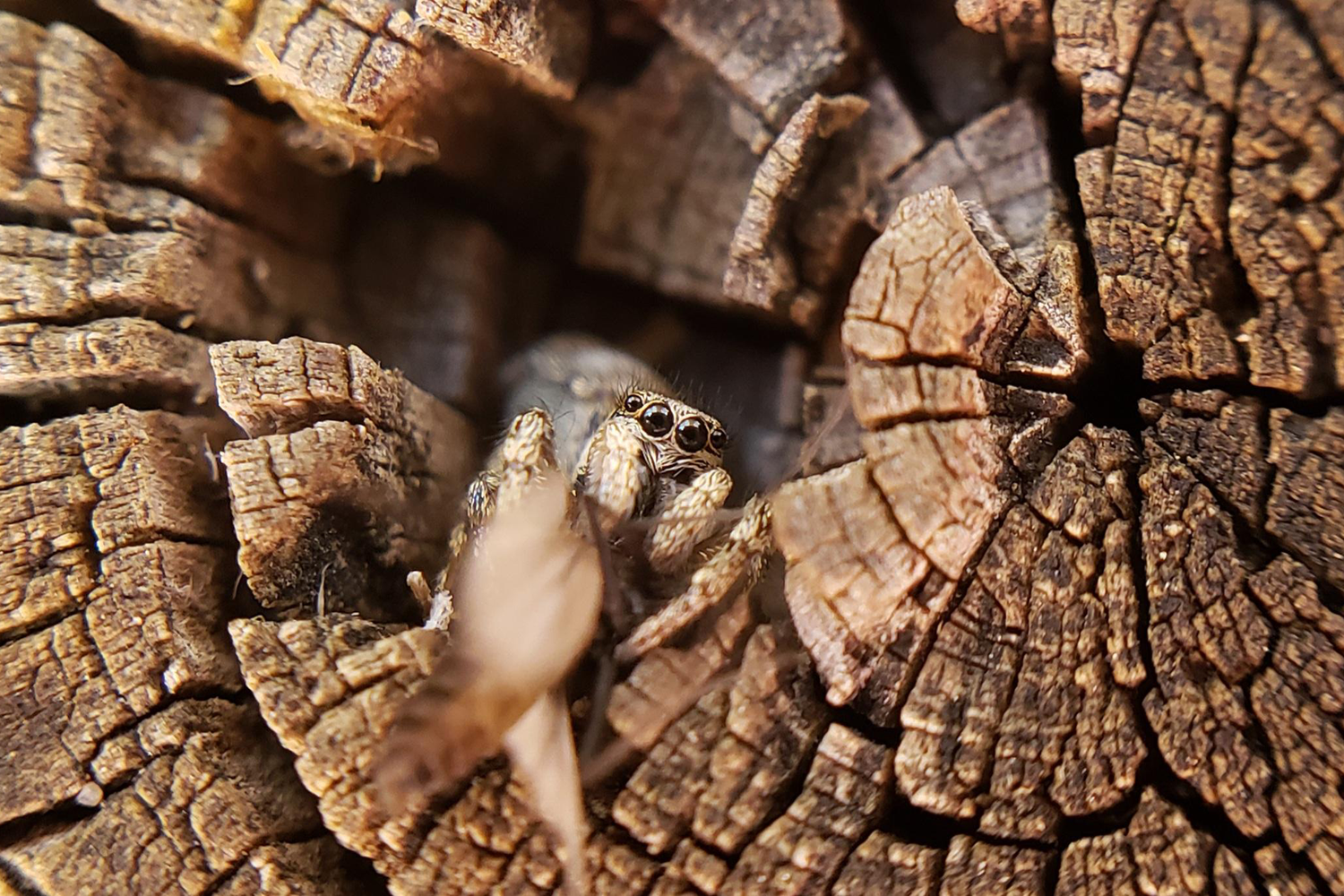Research
An innovative and adaptive mindset is critical in our rapidly changing world. We eagerly explore new ideas and approaches to address the existing and emerging challenges of land conservation. We use new approaches, technologies and techniques to improve mapping, monitoring, and data analysis to ensure effective conservation planning.

Plastic Pathways: Following pollution through Canada’s wetlands
This summer, Environment and Climate Change Canada launched a new project to investigate microplastics in the wetlands of Creek 53. Led by Alex Jardine and Dr. Jennifer Provencher from the National Wildlife Research Centre, the team is collecting soil, water, frogs, and tadpoles to better understand how microplastic pollution moves through these delicate ecosystems.
Wetlands like Creek 53—with their dense vegetation and seasonal pools—can trap plastic debris. This pollution may reduce the overall health of the ecosystem or be ingested by local wildlife. That makes Creek 53 an ideal location to study the effects of this growing environmental issue.

Springtime Research: Frogs in our wetlands
We are excited to announce another research project that is commencing this spring. With the generous help of Dr. Jessica Ford, we will be embarking on a monitoring project to understand what frog species exist in our protected areas. Dr. Ford will be establishing monitoring plots in various locations, whether the ephemeral ponds or the standing ponds found throughout the territory.

A summer exploring insects and spiders in Hudson
In February 2023, I received an email from my supervisor with the idea of conducting a survey to explore and catalogue the insects and spiders on protected properties that he was connected to: the Creek 53 Conservancy Trust. An offer to discover, document, and share knowledge about the diversity insects and spiders (known collectively as arthropods) in a region for which this information is unknown.

Creek 53 welcomes its first researcher
While some baseline data has been collected on the lands for some of the flora and fauna (e.g., birds, some amphibians and reptiles, some plants and trees) most of the biodiversity found at Creek 53 remains unknown. Having additional baseline information particularly about arthropod biodiversity on the land will be important and foundational to a conservation plan, and also helps better understand the importance of the watershed more generally.
Image by Savannah Burroughs
